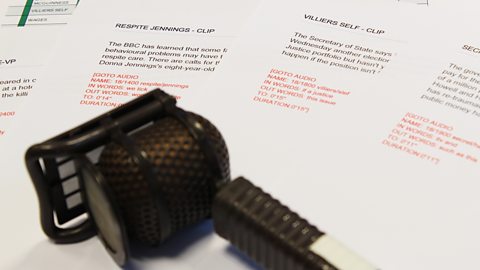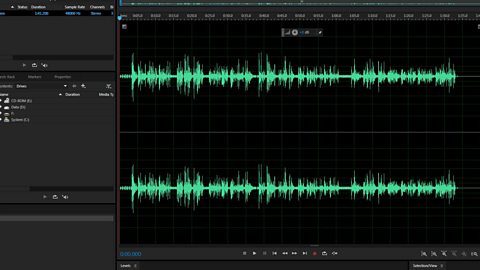Links
Write the links

Links contain information on the timing of each news report
You need to write the linksPieces of script that link a news or feature package together, such as introducing different sections of the piece or telling the listener who is speaking in an interview. around the audio.
Links glue the story together. They play an important role in introducing the different sections of a radio package, letting the listener know whose voice theyâre about to hear next.
When writing links, donât use formal language: simply write as you speak. To make your story come alive for the listener, keep both the audio and your links short and snappy. Long sections where just one person is speaking can be boring for listeners.
Try to avoid using the same words at the end of your links as the interviewee says in the beginning of the clip. ie.: Sarah Jones said she was disappointed⊠[Sarah Jones speaking]: "I am disappointedâ.
You will also need to write the cueThe introduction spoken by the presenter or news-reader before a news or feature package is broadcast.. The cue is the introduction spoken by the presenter or news-reader before your package is played. Make sure that the intro to your package is not simply repeating what the cue has just said.
Test your script
The best way to test your script is to read it aloud and consider if it makes sense and sounds right. If you find that sentences are too long, complicated or unclear, re-write the necessary sections.
Mix the package

You'll need to use audio editing software to mix the different components together
This involves mixing all the different elements â audio clips, links, and sound effects - into a story that makes sense. Normally the strongest or most important interview is placed near the start of the package. Avoid running two clips back to back without a link in between.
When you know how itâs all going to fit together, you can write your final script. Remember to keep to a strict word-count: three words per second. In radio, every second counts, so make every word matter.